History, Art and Culture - 3 | Current Affairs & Hindu Analysis: Daily, Weekly & Monthly - UPSC PDF Download
Yakshagana: A Traditional Folk Dance-Drama
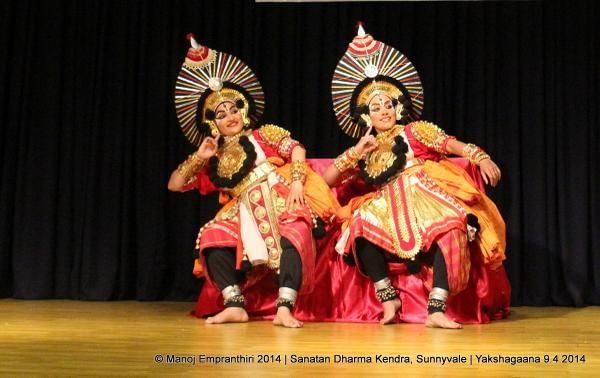 Why in News?
Why in News?
Tulasi Raghvendra Hegde, a remarkable 15-year-old talent, has recently gained attention as a prominent Yakshagana performer. He has been honored with the Young Achiever Award 2024 by the Rotary Club of Madras East.
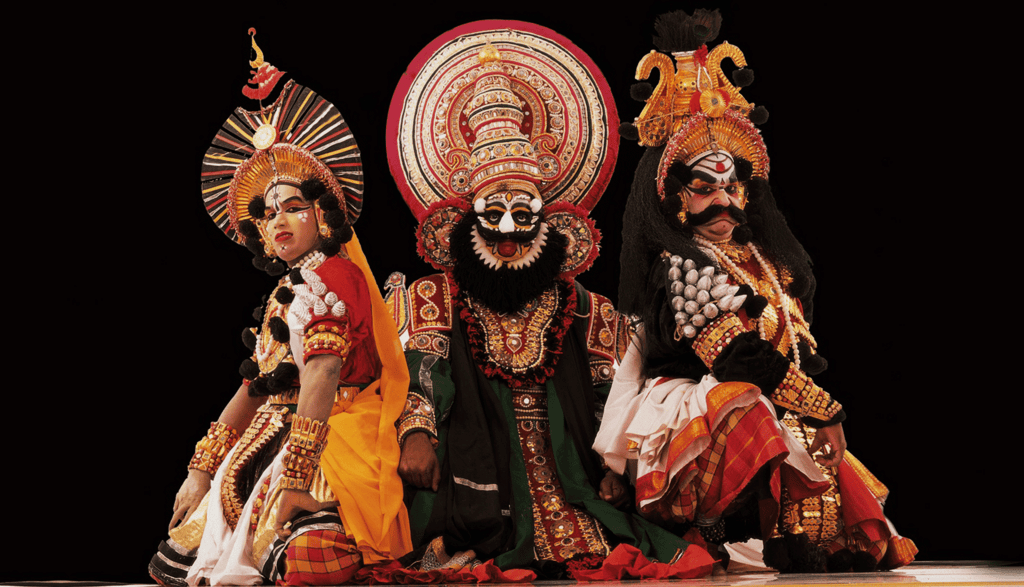
Key Takeaways
- Yakshagana is a traditional folk dance-drama originating from coastal Karnataka.
- The name 'Yakshagana' translates to 'celestial music,' with 'Yaksha' meaning celestial and 'Gana' meaning music.
- This art form combines dance, music, song, and vibrant costumes, presenting a celestial narrative through scholarly dialogues.
- Performances are typically conducted in open-air theatres, particularly in village paddy fields after the harvest season.
Additional Details
- Performance Structure: Each Yakshagana performance centers around a sub-story (Prasanga) derived from ancient Hindu epics such as the Ramayana and Mahabharata. These performances feature stage acting and commentary, with a lead singer known as the Bhagavatha narrating the story alongside traditional music.
- Musical Elements: The music of Yakshagana incorporates various instruments, including the Chande (drums), Harmonium, Maddale, Taala (mini metal clappers), and flute, all contributing to a rhythmic atmosphere that enhances the dancers' performances.
- Costumes: Performers don elaborate costumes that include large headgear, colorful face paint, and unique body costumes, often adorned with musical beads (Gejje) on their legs. These heavy costumes require considerable strength, and the performances can last several hours.
In conclusion, Yakshagana is not just a form of entertainment but a rich cultural heritage that showcases the artistic expressions of Karnataka. The recognition of young talents like Tulasi Raghvendra Hegde highlights the continuing relevance and evolution of this art form in contemporary society.
Prakash Parv of Guru Nanak Dev Ji
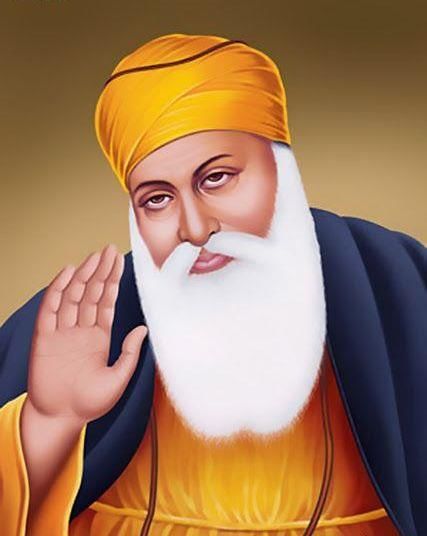 Why in News?
Why in News?
Recently, the President of India greeted citizens on the eve of Prakash Parv, urging them to adopt the teachings of Guru Nanak Dev Ji and promote unity and equality in society. Prakash Parv is celebrated on the birth anniversary of Guru Nanak Dev Ji, which falls on Kartik Purnima, the 15th lunar day in the month of Kartik, according to the Hindu calendar. This celebration holds significance as it represents Guru Nanak's efforts to guide people from darkness towards light.
Key Takeaways
- Guru Nanak Dev Ji was born in 1469 in Talwandi village, near Lahore, Pakistan.
- He was the first of the 10 Sikh Gurus and had a significant spiritual revelation around the age of 30.
- His teachings emphasized the oneness of God and the importance of equality among all people.
Additional Details
- Spiritual Revelation: At around 30 years old, Guru Nanak experienced a profound spiritual moment near the Kali Bein river, leading him to declare, 'There is neither Hindu nor Muslim.'
- He was a key figure in the Nirguna School of the Bhakti movement and was influenced by thinkers like Kabir Das.
- Guru Nanak's hymns were later included in the Adi Granth by the fifth Sikh Guru, Arjan, in 1604.
- He established the first Sikh community in Kartarpur, promoting a life of shared worship and community.
Guru Nanak's teachings on unity, equality, and devotion have profoundly shaped Sikhism and the Bhakti movement. His emphasis on the oneness of God and respect for all religions continues to inspire millions today. The principles he laid down promote peace, love, and social justice, remaining relevant in contemporary society.
100 Years of the Belgaum Congress Session
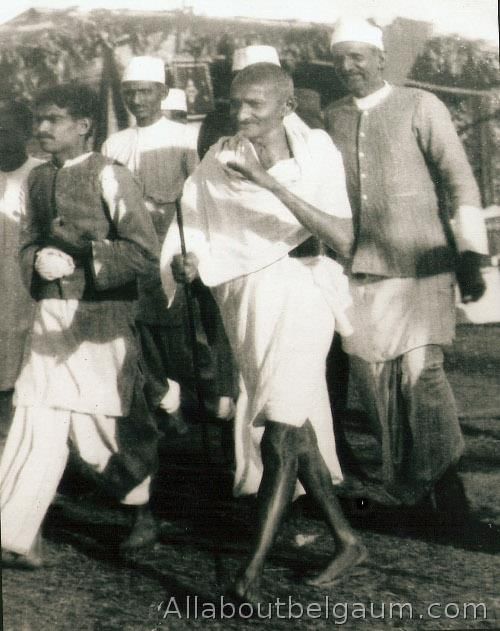 Why in News?
Why in News?
The centenary of the 1924 Belgaum Congress session is set to be celebrated in Belagavi, Karnataka, on December 26-27, 2024. This event commemorates Mahatma Gandhi's leadership during the historic All-India Congress session, where he made significant contributions to the party's ideology and organizational structure.
Key Takeaways
- The session was the only Congress meeting presided over by Gandhi as party chief.
- Gandhi focused on social change, including combating untouchability and promoting khadi.
- He advocated for Hindu-Muslim unity, which was crucial for the freedom movement.
- The session highlighted cultural performances, enhancing its historical significance.
Additional Details
- Gandhi's Leadership: Gandhi served as Congress president from December 1924 to April 1925, marking a pivotal moment in the party's history.
- Focus on Social Change: He emphasized the importance of khadi, making it mandatory for Congress members to spin khadi and submit 2,000 yards monthly. Membership fees were significantly reduced.
- Hindu-Muslim Unity: Gandhi used this platform to promote unity between Hindus and Muslims, vital for the broader independence movement.
- Social and Economic Upliftment: Issues like sanitation and town planning were addressed, along with cow protection, which Gandhi clarified was not related to religious conversion but aimed at uplifting farmers economically.
- Gandhi praised sanitation volunteers, highlighting the involvement of individuals across castes and criticized excessive spending on VIPs during the session.
- Cultural Significance: The session featured notable performances by Hindustani maestro Vishnu Digambar Paluskar and Gangubai Hangal, along with the Kannada song 'Udayavagali Namma Chaluva Kannada Nadu.'
- Legacy of the Session: Pampa Sarovara well, dug for the session, continues to supply water to parts of south Belagavi.
This centenary celebration not only honors the legacy of the 1924 Belgaum Congress session but also reflects on the enduring values of social reform and unity championed by Gandhi.
53rd Anniversary of Vijay Diwas
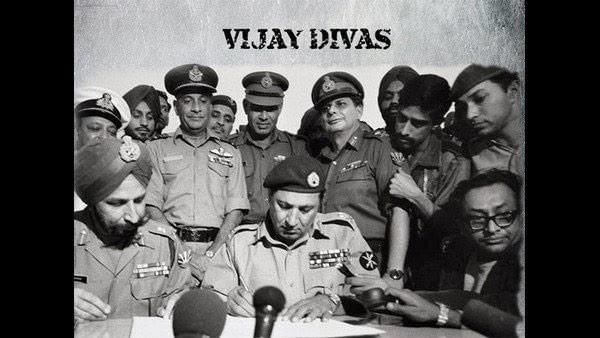 Why in News?
Why in News?
Recently, India commemorated Vijay Diwas on 16th December, marking the 53rd anniversary of its victory in the Bangladesh Liberation War of 1971 and the subsequent creation of Bangladesh. National leaders, including the President and Prime Minister, paid tributes to the fallen soldiers at the National War Memorial in Delhi.
Key Takeaways
- Vijay Diwas commemorates India's victory in the 1971 Bangladesh Liberation War.
- The war led to the independence of Bangladesh from Pakistan.
- Tributes were paid to fallen soldiers at the National War Memorial.
Additional Details
- 1971 Bangladesh Liberation War: This was an armed conflict between East Pakistan (now Bangladesh) and West Pakistan (now Pakistan) that resulted in the independence of Bangladesh from Pakistan.
- Origins of the Conflict: The roots of the war can be traced back to the 1947 Partition of India, which created Pakistan as a Muslim-majority state. Geographical, cultural, and linguistic differences between East and West Pakistan fueled discord.
- Causes of the War:
- Social Exploitation: West Pakistan viewed East Pakistan as culturally inferior, leading to systematic discrimination.
- Linguistic Marginalisation: The imposition of Urdu as the national language disregarded Bengali, causing unrest.
- Political Discrimination: Power was concentrated among the Punjabi elite, with minimal representation for East Pakistan.
- Economic Exploitation: Despite contributing significantly to the national revenue, East Pakistan received a disproportionately low share of the budget.
- Key Events:
- Operation Searchlight (March 25, 1971): A brutal military crackdown by Pakistan aimed at suppressing Bengali nationalism.
- Independence Proclamation: Sheikh Mujibur Rahman's declaration of independence initiated the Liberation War, leading to the formation of the Mukti Bahini.
- Refugee Crisis: Over 10 million refugees fled to India, prompting humanitarian aid and military support from India.
- India's Response: Initially cautious, India's military intervention followed a mass exodus of refugees and Pakistan's military actions, leading to a swift victory for Indian forces.
The war's outcome repudiated Jinnah's two-nation theory, significantly altering the geopolitical landscape of South Asia. It also enhanced India's international standing as a supporter of human rights.
National Mission for Manuscripts and National Culture Fund
National Mission for Manuscripts Overview
- Restructured As: Gyan Bharatam Mission
- Established: 2003 (Restructured in 2025)
- Ministry: Ministry of Culture, Government of India
- Nodal Agency: Indira Gandhi National Centre for the Arts (IGNCA)
- Objectives: Survey and Documentation, Conservation and Preservation, Digitization, Publication and Research, Capacity Building, Outreach and Awareness
- Period: 2024-31
- Budget: ₹482.85 crores
- Manuscript Estimates: Approximately 10 million manuscripts in India, covering various themes, languages, and scripts
- Conservation Centers: 49 Manuscript Conservation Centers (MCCs) across the country
- Resource Centers: 54 Manuscript Resource Centers (MRCs)
- Significance: Aims to connect India's past with its future by preserving its rich manuscript heritage
National Mission for Manuscripts Features
The National Mission for Manuscripts (NMM) was established in February 2003 and has been restructured as the "Gyan Bharatam Mission" for the period 2024-2031.
- For the upcoming period, the mission has a budget of ₹482.85 crore, aiming to enhance efforts in manuscript digitization, conservation, and public outreach.
- Key focus areas include the digitization of rare and fragile manuscripts to ensure their preservation.
- Significant contributions are planned in states like Uttar Pradesh through documentation, conservation workshops, and research collaborations.
- The mission also emphasizes collaboration with educational institutions, libraries, and researchers to strengthen manuscript preservation efforts.
National Mission for Manuscripts Objectives
The National Mission for Manuscripts (NMM) aims to preserve India's rich manuscript heritage through key objectives:
- Nationwide surveys to identify and register manuscripts for better conservation and public access.
- Scientific preservation techniques to safeguard manuscripts for future generations.
- Development of a National Digital Manuscripts Library for online access by scholars and the public.
- Promotion of research and publication of unpublished manuscripts to encourage advanced studies in manuscriptology.
- Training programs in manuscriptology and conservation to nurture new experts in the field.
- Organization of exhibitions and outreach initiatives to enhance public interest and appreciation of India’s manuscript heritage.
Indian Manuscripts Significance
Indian Manuscripts offer valuable insights into the country’s cultural, historical, and scholarly heritage. They reflect ancient traditions, document key historical events, and serve as primary sources for research in fields like literature, religion, and art. In addition to preserving languages, these manuscripts support interdisciplinary studies, contributing to a deeper understanding of India’s civilization and its enriching legacy.
National Mission for Manuscripts Achievements
The National Mission for Manuscripts (NMM) has made significant progress in preserving India’s manuscript heritage. Key achievements include:
- Documentation of over 5.2 million manuscripts across the country.
- Establishment of Manuscript Resource Centers (MRCs) and Manuscript Conservation Centers (MCCs) in collaboration with various institutions.
- Digitization of approximately 3.5 lakh manuscripts, with ongoing efforts to expand digital access.
- Specialized training programs for scholars and archivists in manuscript conservation.
- Online availability of more than 1,35,000 manuscripts, providing free access to researchers and the public.
Amravati as a Buddhist Site
Origin and Development
The Amaravati school of art, also known as the Andhra or Vengi School, originated in and around Amaravati (historically called Dhānyakaṭaka) in Andhra Pradesh. This ancient Indian art style flourished from the second century BC to the end of the third century CE. It is renowned for its exquisite reliefs, considered among the finest examples of narrative sculpture in the world.
Distinction from Other Schools
The Amaravati School is one of the three major schools of ancient Indian art, alongside the Mathura and Gandharan Schools. Unlike the Gandhara School, which was influenced by foreign elements, the Amaravati School developed on purely indigenous lines, showcasing more artistic freedom and boldness.
- Themes and Subjects: The reliefs of the Amaravati School primarily depict scenes from the life of the Buddha, events from his previous births (Jataka stories), and various aspects of daily life. Early works focus on Hinayanism, while later pieces reflect Mahayanism. Secular images, such as scenes of dance and music, are also present, reflecting the joy of life.
- Material and Technique: The relief sculptures are carved from white or cream limestone, giving them a marble-like appearance. This material contributes to the artistic beauty and freshness of the sculptures, which are often referred to as ‘marbles.’ The narrative art style is a prominent feature, with medallions and panels depicting stories in sequential images.
- Major Remains and Patronage: Significant remains of the Amaravati School include the great stupa at Amaravati and stupa remains at Jaggayyapeta, Nagarjunakonda, and Goli in Andhra Pradesh, as well as sites in Maharashtra like Ter. The art flourished under the patronage of the Satavahana dynasty and later by the Ikshvakus and other groups.
- Evolution of Artistic Representation: The six-century span of the Amaravati style coincided with the transition from aniconic to iconic representation of the Buddha. Both methods are evident in the art, with iconic forms such as seated and standing Buddhas alongside aniconic representations like empty thrones symbolizing his presence.
- Influence and Spread: The Amaravati art style spread to much of Southeast Asia and Ceylon (Sri Lanka), with notable examples in places like Anuradhapura. The influence of Amaravati art is seen in the richness of detail, dynamic movement, and the profound naturalism of figures, contributing to a sense of vitality and depth in the sculptures.
|
44 videos|5271 docs|1113 tests
|
FAQs on History, Art and Culture - 3 - Current Affairs & Hindu Analysis: Daily, Weekly & Monthly - UPSC
| 1. What is Yakshagana and what are its key features? |  |
| 2. What is the significance of Prakash Parv of Guru Nanak Dev Ji? |  |
| 3. What was the importance of the Belgaum Congress Session of 1924? |  |
| 4. What does Vijay Diwas commemorate and why is it celebrated? |  |
| 5. How does Yakshagana reflect the culture and traditions of Karnataka? |  |





















